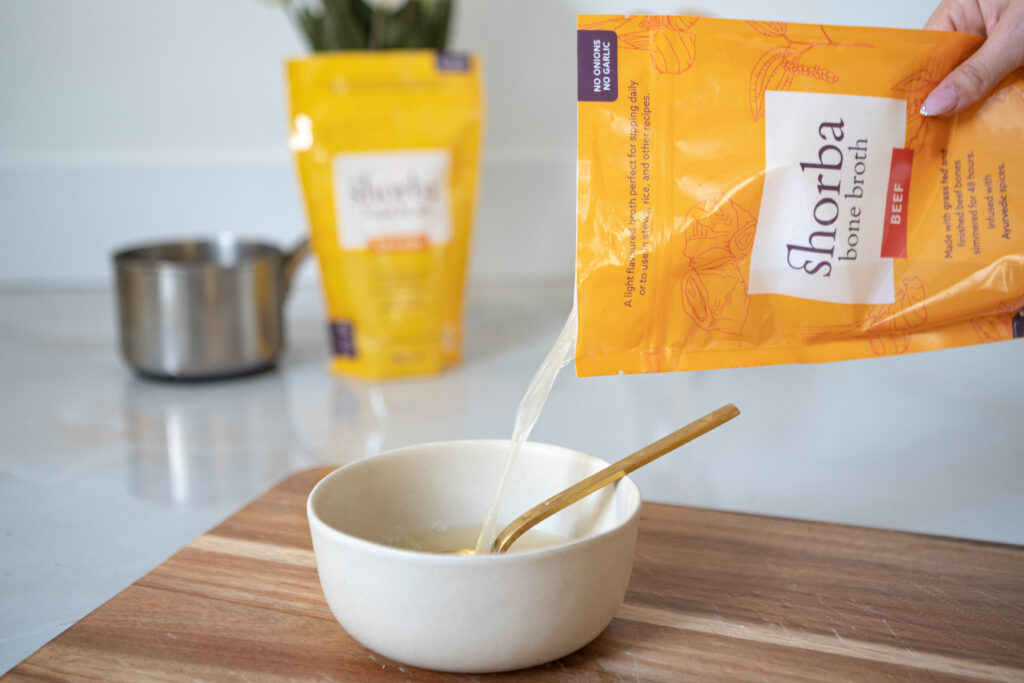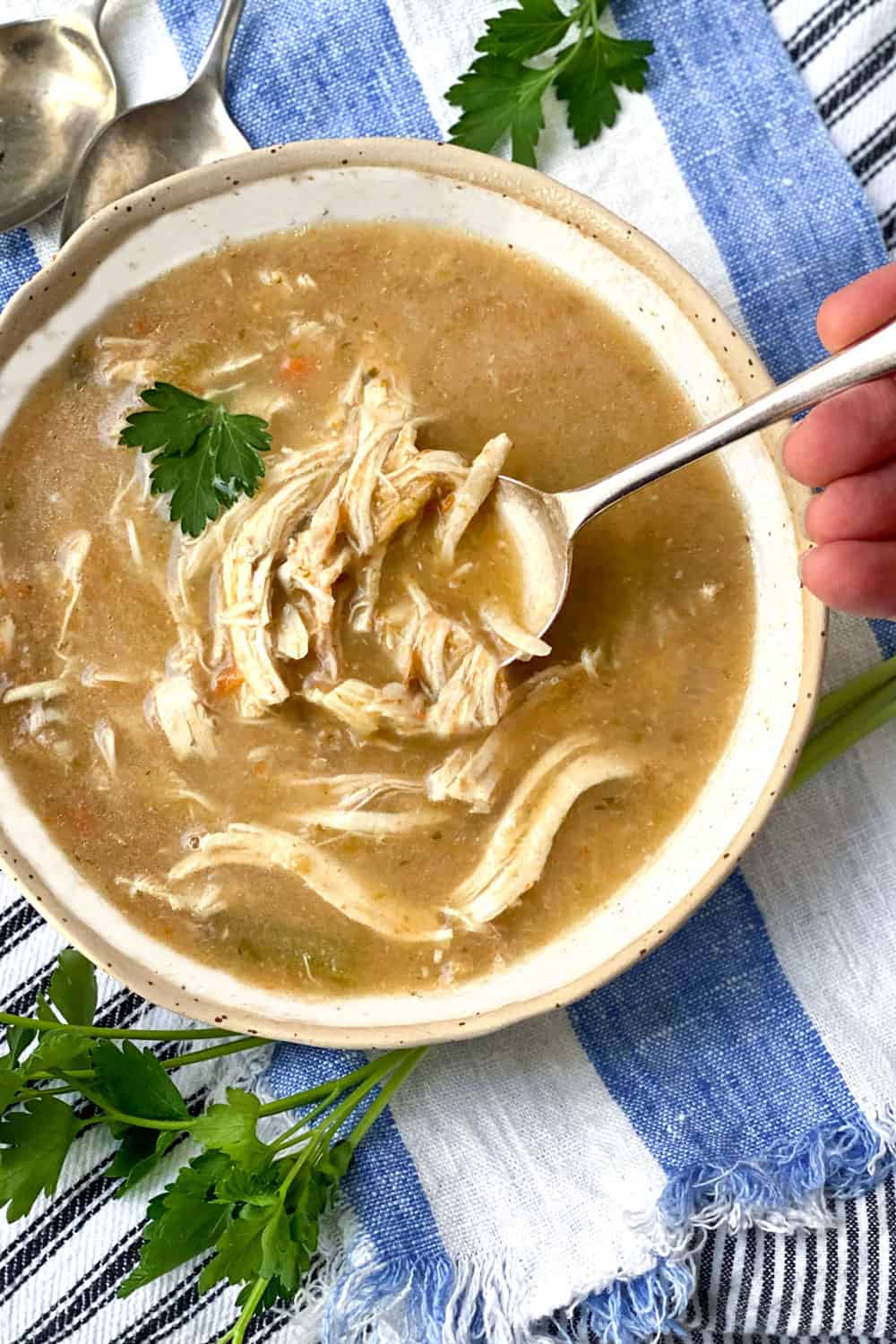How Beef Broth Supports Holistic Health: What to Know
How Beef Broth Supports Holistic Health: What to Know
Blog Article
The Ultimate Overview to Enjoying and making Organic Bone Broths in the house
Bone brew has actually gotten attention for its many health advantages and culinary adaptability. Crafting organic bone broth in your home enables individuals to regulate the quality of components, making sure a nourishing outcome. Comprehending the choice of bones, crucial flavor elements, and correct food preparation strategies is crucial. As the process unfolds, one might question how to boost their broth past the basics and integrate it into everyday meals for improved taste and nutrition.
Recognizing the Health Conveniences of Bone Brew
Bone brew has been a staple in numerous cuisines for centuries, its health advantages have actually gotten significant interest in recent years. Rich in collagen, amino acids, and minerals, bone broth is frequently proclaimed for its possible to support joint health and wellness, improve gut feature, and enhance skin flexibility. The jelly originated from cooked bones may assist food digestion and aid seal the gut lining, potentially alleviating issues like dripping digestive tract syndrome.Furthermore, the presence of nutrients such as glucosamine and chondroitin might contribute to lowered inflammation and discomfort relief in joints. Additionally, bone brew is hydrating and can work as a healthy base for soups and stews. Lots of advocates additionally claim that it enhances the immune system, thanks to its mineral account. In general, the resurgence of interest in bone broth is connected to its regarded capability to promote overall wellness and support various physical features.
Selecting the Right Bones for Optimum Flavor and Nutrition
What aspects should one take into consideration when picking bones for brew preparation? The kind of bones utilized significantly influences both flavor and nutritional worth. Initially, it is vital to select bones that consist of a mix of marrow bones, joint bones, and meaty bones. Marrow bones offer healthy fats and abundant flavors, while joint bones contribute collagen, enhancing the brew's dietary profile.Additionally, sourcing bones from pasture-raised or grass-fed pets guarantees greater quality and even more nutrients, as these animals are typically much healthier. The quality of the bones is also important; selecting bones from regional butchers or farmers' markets can guarantee suitable flavor. Bone size matters too; bigger bones release more gelatin, resulting in a richer broth. Thinking about the type of animal-- beef, fish, or poultry-- can affect the last preference, permitting for versatile broth alternatives tailored to specific preferences.
Crucial Active Ingredients for a Delicious Bone Broth

Quality Bone Option
The foundation of a savory bone broth depends on the careful option of high-quality bones. Sourcing natural, pasture-raised or grass-fed bones is necessary, as these choices are most likely to be devoid of harmful additives and supply premium nutrients. Varieties such as lamb, beef, or chicken bones each pass on unique flavors and health benefits. Bone types, consisting of marrow bones, knuckle bones, and oxtails, add jelly and collagen, improving the brew's appearance. Choosing bones with a mix of meat and connective cells can likewise add richness and depth. Furthermore, choosing bones with visible marrow guarantees a nutrient-dense brew, boosting the general top quality. Ultimately, investing time in quality bone option lays the groundwork for a delicious and beneficial broth.
Aromatic Taste Boosters
Choosing premium bones sets the stage for a abundant and healthy bone broth, however it is the enhancement of aromatic flavor boosters that really raises the meal. Components such as onions, garlic, and carrots not just present sweet taste but also add depth to the broth. Fresh herbs like parsley, thyme, and bay leaves include an aromatic note, while seasonings such as black peppercorns and cloves present heat and intricacy. In addition, incorporating a splash of apple cider vinegar can assist essence minerals from the bones, improving the brew. These taste boosters develop a harmonious mix, changing a straightforward brew right into a savory foundation for sauces, stews, or soups, making it a functional element in any kind of cooking repertoire.
Step-by-Step Overview to Making Bone Broth in the house
Developing bone broth at home can be a fulfilling cooking endeavor that improves both flavor and nutrition in different recipes. To start, one have to select high-quality bones, ideally from grass-fed or natural resources. Roasting the bones at 400 ° F for about 30 minutes can intensify the taste. Next, move the roasted bones to a large pot or sluggish cooker and cover them with cool water. Including a dash of vinegar assists extract minerals from the bones.Include aromatic vegetables like onions, carrots, and celery for added depth, along with natural herbs and flavors as desired. Bring the mix to a boil, after that lower to a simmer. It is necessary to allow the broth simmer for a minimum of 12 hours, though longer is more suitable for maximum splendor. Finally, stress the brew via a fine-mesh sieve and shop it in airtight containers, all set to elevate meals with its healthy essence.

Tips for Refining Your Bone Broth Simmer
While simmering bone broth, preserving the appropriate temperature and timing is vital for accomplishing a delicious and rich outcome. A mild simmer, preferably in between 190 ° F and 210 ° F, assists extract optimum nutrients and tastes without steaming, which can make the brew cloudy. It is a good idea to keep an eye on the pot carefully, adjusting the heat as essential to keep this simmer.Timing is likewise important; a longer simmer, usually ranging from 12 to 48 hours, permits deeper taste extraction and collagen release. For poultry bones, a 12 to 24-hour simmer is sufficient, while beef bones profit from longer food preparation times.Additionally, skimming any kind of foam or pollutants that rise to the surface throughout the initial couple of hours can boost the broth's quality and taste. Lastly, making certain the pot is covered during simmering aids to maintain dampness and intensify the tastes, making for a more satisfying output.
Creative Ways to Use Bone Brew in Your Cooking
Incorporating bone broth into numerous dishes raises both taste and dietary worth. Cooks and home chefs alike discover that using bone broth as a base for stews and soups enhances deepness and splendor, changing basic dishes into passionate read this post here meals. It can likewise be employed in risottos, where the broth changes water, allowing the grains to absorb its mouthwatering essence.Additionally, bone brew works as an excellent food preparation fluid for grains like quinoa or rice, infusing them with nutrients and taste. For an included twist, it can be used in braising meats, resulting in tender, tasty end results. Even sauces take advantage of a sprinkle of bone brew, enriching their taste profile.Moreover, bone broth can be incorporated into shakes for an unanticipated health and wellness boost, providing healthy protein and nutrients without endangering taste. These innovative applications showcase the adaptability of bone broth in daily food preparation, making it a very useful kitchen staple.
Saving and Maintaining Your Self-made Bone Brew
Appropriate storage space and conservation of homemade bone broth is essential for maintaining its taste and nutritional advantages. Freezing strategies and refrigeration best practices play a crucial duty in expanding the brew's rack life. Understanding these approaches can assist ensure that the brew stays secure and tasty for future use.
:max_bytes(150000):strip_icc()/chickensoup-5c06bda8c9e77c0001a276b4.jpg)
Icing Up Methods Clarified
Cold methods are important for efficiently storing and maintaining homemade bone brew, ensuring its abundant tastes and nutrients remain undamaged for future use. To ice up bone broth, it is recommended to let it awesome totally prior to moving it to storage space containers. Glass containers, silicone mold and mildews, or heavy-duty fridge freezer bags are ideal choices. When utilizing containers, leave area at the top for growth during cold. Portioning the broth right into smaller quantities enables easy thawing and lessens waste. Tag containers with the day and components for simple identification. For peak top quality, take in the frozen brew within three to 6 months - Benefits Of Bone Broth. Thawing can be performed in the refrigerator or by utilizing a microwave, ensuring that the brew is heated completely prior to intake
Refrigeration Best Practices
While several emphasis on freezing as an approach of conservation, refrigeration also plays a vital role in saving homemade bone brew effectively. When cooled, bone brew need to be moved to airtight containers, ensuring marginal air exposure to stop spoilage. It is suggested to refrigerate broth within 2 hours of cooking to keep its high quality. Generally, homemade bone brew can be kept in the Source fridge for up to five days. Identifying containers with days can help track quality. For peak taste and safety and security, broth needs to be reheated to a moving boil before usage. If longer storage space is required, cold remains an exceptional option, but appropriate refrigeration methods ensure that bone brew remains scrumptious and healthy for temporary use.
Frequently Asked Questions
Can I Use Frozen Bones for Making Bone Broth?
The concern of utilizing icy bones for bone broth occurs frequently (Benefits Of Bone Broth). Experts agree that frozen bones can be used efficiently, but they ought to be defrosted prior to cooking to assure optimal taste and nutrient removal
Exactly How Long Can I Shop Homemade Bone Broth?

Is It Safe to Reheat Bone Broth Numerous Times?
Reheating bone broth multiple times can position security issues - Chicken Broth. Each reheating cycle raises the risk of bacterial growth. It is a good idea to reheat just once and store any type of leftovers promptly to assure security and top quality
Can I Include Veggies to the Brew for Flavor?
Adding veggies to brew boosts taste and nutritional worth. Common options consist of carrots, onions, and celery. The vegetables instill their significance into the brew, developing a richer and much more full-flavored last item.
What's the Best Method to Thaw Frozen Bone Broth?
To thaw frozen bone broth, one can put it in the fridge over night, use a microwave on low warmth, or submerge the secured container in warm water, ensuring also defrosting without endangering taste or nutrients. It is crucial to choose bones that consist of a mix of marrow bones, joint bones, and meaningful bones. Marrow bones give abundant flavors and healthy and balanced fats, while joint bones contribute collagen, enhancing the brew's nutritional profile.Additionally, sourcing bones from pasture-raised or grass-fed pets assurances higher high quality and more nutrients, as these animals are usually much healthier. Bone types, consisting of marrow bones, knuckle bones, and oxtails, contribute gelatin and collagen, improving the brew's structure. Picking top notch bones establishes the phase for a nourishing and rich bone broth, yet it is the addition of aromatic taste enhancers that absolutely boosts the meal. Even sauces benefit from a splash of bone broth, enriching their taste profile.Moreover, bone broth can be included right into smoothie mixes for an unexpected wellness increase, offering healthy protein and nutrients without endangering you could try here preference.
Report this page